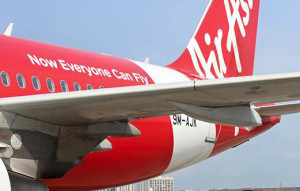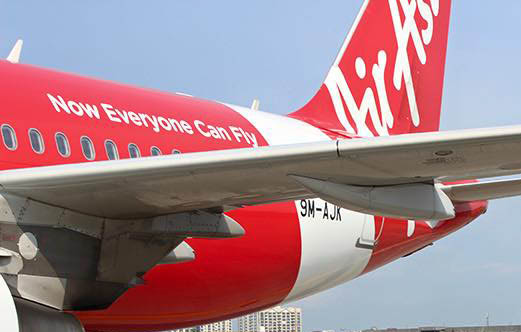
Following the recent completion of the prolonged merger with Zest Airways, Philippines AirAsia (PAA), the local arm of Malaysia’s low-cost carrier giant Air Asia Berhad, will be able to retire this year the AirAsia Zest brand in favor of the Philippines AirAsia logo and focus on growing its operations in 2016, according to aviation think tank Centre for Aviation (CAPA).
“AirAsia has already completed the transition to a single operating certificate in the Philippines, following a complicated and costly two years of maintaining two separate affiliates,” CAPA said in its latest analysis. With this development, the aviation think tank said growth is expected to resume in 2016 for PAA, “ending a phase of consolidation and fleet reductions.”
CAPA said AirAsia’s Philippine operation has been highly unprofitable since it was launched in 2012, leading it to enter into a quasi-merger with Zest Airways and adopt the AirAsia Zest brand in late 2013.
Thus, over the last two years, AirAsia’s operation in the Philippines has been in an almost constant state of restructuring, CAPA noted. Currently the operation consists of only 12 active aircraft serving seven domestic and seven international destinations.
However, AirAsia Philippines chief executive officer Josephine Caneba told CAPA that final approval to merge the two brands was recently secured, leading to the phase-out of the AirAsia Zest brand soon.
CAPA said that with this development, “the outlook for AirAsia’s Philippine operation is starting to brighten.”
A brand campaign is expected to be rolled out over the next couple of months throughout the Philippines aimed at cementing the AirAsia Philippines brand.
Its fleet is also now in the final process of being streamlined. Caneba said the airline still has 15 aircraft on its books, but is currently selling older aircraft and aircraft powered with V2500s inherited from Zest. The carrier will be left with 12 newer models of CFM56-powered A320s, giving it one type of aircraft that is consistent with the rest of the AirAsia Group and generating operational efficiencies, CAPA noted.
Moreover, expansion is now possible as US$50 million in new capital has been raised from the five shareholders, which include four Filipino investors (with 15% stakes each) and Malaysia-listed AirAsia Berhad (with a 40% stake). Caneba expects the recapitalization exercise to be completed by the end of 2015.
“Strategically, PAA needs to resume expansion as it cannot afford to be stuck at its current modest capacity level. Cutting capacity and the fleet over the last year was necessary but is seen as a temporary measure to position the airline for future growth,” CAPA said.
AirAsia has also been working on a network expansion plan which focuses on opening new unserved routes from secondary gateways such as Davao, Iloilo, Kalibo and Puerto Princesa. The carrier will continue to pursue some expansion at its main base in Manila, including a new flight to Singapore. But the main focus will be the secondary hubs in part because Manila is capacity constrained and PAA is now fully utilizing its Manila slots, CAPA said.
PAA will also focus on secondary international routes, which CAPA said is logical because it needs to differentiate itself from the larger competitors, and because domestic routes are generally lower yielding and in some cases oversupplied.
“PAA has sensibly determined it is better off redeploying some if its domestic capacity to the higher yielding international market,” CAPA said. It added that over the last couple of years, PAA has discovered that battling flag carrier Philippine Airlines and much larger budget carrier Cebu Pacific in the domestic market is generally a losing proposition.
The company will instead be focusing on the Philippines-China market where it sees opportunities to add several destinations in China from multiple Philippine gateways.
The load factor of AirAsia’s Philippine operation improved to 78% in the first semester of 2015, compared to only 67% in the same period last year. Passenger traffic was flat despite a 10% reduction in seat capacity as unprofitable routes were cut.
Also, quarterly seat load factor exceeded 80% for the first time in the second quarter of 2015.
CAPA said 2016 will “clearly be a critical year for PAA” as it still faces major challenges. “If it meets its 2016 goal of becoming profitable, aspirations for an initial public offering within two years will become realistic, providing a foundation for consistent growth. If the newly restructured PAA remains loss-making its long-term survivability—and the AirAsia Group’s need for a Philippine affiliate—will again be questioned,” CAPA said.





